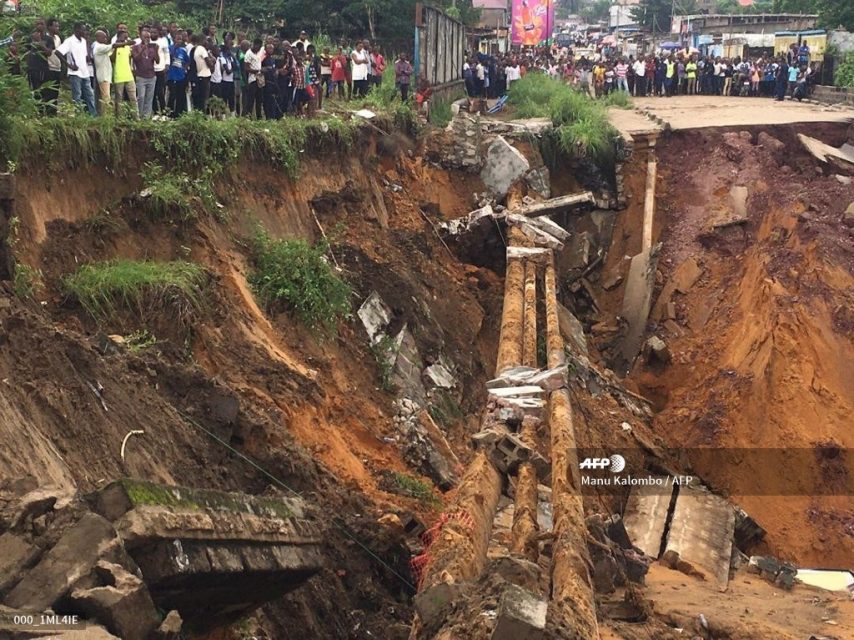
KINSHASA, DR Congo (AFP) — Forty-one people died in the DR Congo capital Kinshasa after torrential overnight rains, with some swept away by landslides, a top city official said Tuesday, giving a provisional toll.
“The loss, in terms of property and lives, is really huge,” Kinshasa’s vice governor, Neron Mbungu, told AFP, adding that the dead included a child who was electrocuted.
Three of the city’s 26 districts were especially hit, he said.
A bridge connecting the districts of Lemba and Ngaba collapsed, and another was destroyed in the district of Kisenso, he said.
In Lemba, an AFP journalist saw a gigantic hole, about 10 metres (30 feet) deep and 20 metres (70 feet) across, where a road had been swept away.
The mayor of Lemba, Jean Nsaka, said a drainage ditch had given way under the pressure of the water, and the highway had been engulfed.
“More than 300 homes have been flooded. There are many houses which have been destroyed,” Nsaka said.
Seven other people died in floods and landslides in South Kivu, in the far east of the vast country, local official Seth Wenga said.
Fatal floods and rains are frequent in Kinshasa.
In January last year, around 50 people were killed in landslides and floods and after houses collapsed following just one night of heavy rain.
Flood deaths in Kinshasa are “linked to overpopulation (and) building on land which is vulnerable to flooding,” Roger-Nestor Lubiku, former head of the Geographical Institute of Congo (IGC) told AFP.
Africa’s third largest city, Kinshasa counts around 10 million inhabitants — a doubling of the population in less than two decades — and many of them live in precarious dwellings.
“Eighty percent of the losses are caused by unauthorised constructions,” said Mbungu, the city’s vice governor.
“People are stubborn and do not respect the building regulations,” he said.
“Even if the state says they shouldn’t build there, they build. And you can see the consequences today.”
© Agence France-Presse
